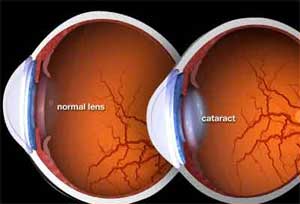- Home
- Editorial
- News
- Practice Guidelines
- Anesthesiology Guidelines
- Cancer Guidelines
- Cardiac Sciences Guidelines
- Critical Care Guidelines
- Dentistry Guidelines
- Dermatology Guidelines
- Diabetes and Endo Guidelines
- Diagnostics Guidelines
- ENT Guidelines
- Featured Practice Guidelines
- Gastroenterology Guidelines
- Geriatrics Guidelines
- Medicine Guidelines
- Nephrology Guidelines
- Neurosciences Guidelines
- Obs and Gynae Guidelines
- Ophthalmology Guidelines
- Orthopaedics Guidelines
- Paediatrics Guidelines
- Psychiatry Guidelines
- Pulmonology Guidelines
- Radiology Guidelines
- Surgery Guidelines
- Urology Guidelines
Tri-Moxi injection, a promising substitute for eye drops after cataract surgery

USA: Triamcinolone acetonide–moxifloxacin (Tri-Moxi) injection is a promising substitute for standard eyedrop therapy for cataract patients according to a recent study. This could be a boon for patients having poor compliance with eyedrop usage.
The study, published in the Journal of Cataract & Refractive Surgery found that triamcinolone acetonide-moxifloxacin injection is an effective method to intraocular inflammation and corneal edema after cataract surgery.
Michael E. Rauser, Loma Linda University Eye Institute, Loma Linda, California, USA, and colleagues conducted the study to compare the effectiveness of intravitreal injection of triamcinolone acetonide–moxifloxacin to a standard eyedrop regimen in controlling postoperative inflammation, corneal edema, and the rate of high intraocular pressure (IOP) among cataract patients.
This retrospective longitudinal comparative study comprised of 1195 consecutive eyes divided into two groups:
- Group 1 comprised of 681 eyes that received Tri-Moxi and an NSAID after undergoing cataract surgery.
- Group 2 comprised of 514 eyes that received a standard eye drop therapy of antibiotic, corticosteroid and NSAID after cataract surgery.
Researchers evaluated postoperative inflammation, corneal oedema and the rate of high IOP between the two groups.
Also Read: Preoperative dry eye treatment with Xiidra improved outcomes of cataract surgery
Key findings of the study include:
- The anterior chamber cell reaction severity decreased by 34.0% and 35.7% at 1 week and 1 month, respectively, after surgery following triamcinolone acetonide–moxifloxacin injection compared with standard eyedrop therapy.
- Group 1 was associated with increased severity of corneal edema on postoperative day 1, with no statistically significant difference at 1 week and 1 month postoperatively.
- There was no statistically significant difference in the rate of high IOP between the two groups at different time points postoperatively.
Also Read: Eat colorful fruits and vegetables to avoid cataract later in life
“Triamcinolone acetonide-moxifloxacin injection can be considered as a promising substitute for standard eye drop therapy, especially in patients who have poor compliance with eye drop use,” concluded the authors.
For detailed study log on to https://doi.org/10.1016/j.jcrs.2018.12.019

Disclaimer: This site is primarily intended for healthcare professionals. Any content/information on this website does not replace the advice of medical and/or health professionals and should not be construed as medical/diagnostic advice/endorsement or prescription. Use of this site is subject to our terms of use, privacy policy, advertisement policy. © 2020 Minerva Medical Treatment Pvt Ltd